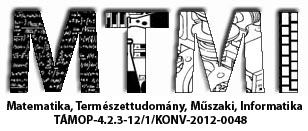Histone 3 phosphorylation is limited to dividing cells and represents mitotic index in histological preparations in malignant lymphoma
Abstract data
Chromosome segregation is initiated by the phosphorylation of the major structural chromosomal protein histone 3 in the late G2 and early mitosis. The aim of this study is to demonstrate the histological representation of the mitotic figures using an antibody stain against phosphorylated H3 (pH3), when compared to the traditional H&E staining in aggressive lymphomas. The study will exhibit a difference in the distribution of G2/M transition that is crucial for mitotic preparation. These morphologically distinct cells with spotty pH3 staining pattern were evaluated together with the mitotic index using the pH3 staining in both control and lymphoma sections
Parallel sections of eighteen large B-cell lymphoma cases were evaluated for mitotic counts following H&E and pH3 immunostainings. In total, ten random microscopic fields of view at x40 power magnification were assessed.
Five reactive lymphadenopathies showing follicular hyperplasia were used as non-neoplastic control. Calculations were done by the GraphPad Prism 5 statistical software.
Number of mitoses was found to be significantly higher when evaluated by pH3 immunostaining compared to classical H&E staining (mean 69.17 ± 11.95 vs. 32.83 ± 4.7, p <0.0001). Mitosis index determined by both methods proved to be higher in reactive germinal centers than in lymphoma (mean 82.60 ± 6.7 and 106.0 ± 24.1 vs 32.83 ± 4.7 and 69.17 ± 11.95, respectively).
Comparing the fraction of G2/preparatory phase highlighted by the spotty pH3 staining pattern we observed striking differences between lymphoma (mean 74.50 ± 33.8) and control cells (212.2 ± 68.2) (p=0.0015) with very low fractions in 8/18 lymphoma cases.
Difficulties in distinguishing mitotic cells (e.g. prophase and apoptosis) in conventional H&E stained sections can be overcome by pH3 immunolabelling. Reactive B-cell populations are highly stimulated and exceed the mitotic activity of aggressive lymphoma. Nevertheless, the reduced fraction of G2/M transition prior entrance to mitosis may reflect a cell cycle regulatory defect resulting mitotic failures in a subset of aggressive lymphoma cases.
Támogatók: Támogatók: Az NTP-TDK-14-0007 számú, A Debreceni Egyetem ÁOK TDK tevékenység népszerűsítése helyi konferencia keretében, az NTP-TDK-14-0006 számú, A Debreceni Egyetem Népegészségügyi Karán folyó Tudományos Diákköri kutatások támogatása, NTP-HHTDK-15-0011-es A Debreceni Egyetem ÁOK TDK tevékenység népszerűsítése 2016. évi helyi konferencia keretében, valamint a NTP-HHTDK-15-0057-es számú, A Debreceni Egyetem Népegészségügyi Karán folyó Tudományos Diákköri kutatások támogatása című pályázatokhoz kapcsolódóan az Emberi Erőforrás Támogatáskezelő, az Emberi Erőforrások Minisztériuma, az Oktatáskutató és Fejlesztő Intézet és a Nemzeti Tehetség Program



